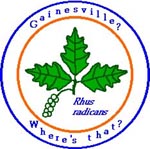John McCarty
Tree Swallow and Eastern Blue-bird Research
For many years, one of my favorite research subjects has been the Tree Swallow (Tachycineta bicolor). I started working on swallows while a graduate student at Cornell University where I earned my doctorate studying the effects of short-term changes in environmental conditions on Tree Swallows. In 1994, I started a collaboration with Anne Secord of the US Fish and Wildlife Service, using Tree Swallows to look at how PCB contamination in the Hudson River of upstate New York was moving into the surrounding landscape and what the impacts of the spread of PCB contamination might be on migratory birds. I hope to start a long-term project in Nebraska and Iowa to look at how a variable climate and changes in land-use patterns might impact breeding birds that will focus on Tree Swallows and Eastern Bluebirds. To learn more about research on Tree Swallows, visit my Tree Swallow page:

Ecological Effects of Global Environmental Change
While working at the interface between science and public policy in Washington DC, much of my focus was on the subject of global climate change. I am especially interested in understanding how a changing and variable climate impacts ecological systems and how resource and land mangers might reduce any negative impacts that might result from changes in climate.
Learn more about my interest in Science Policy at my policy page:
Effects of Chemical Contaminants on Birds
My work on the Hudson River Tree Swallows has led to an interest in how chemical contaminants might impact birds. In particular, I am interested in developing endpoints for studies of contamination in terrestrial systems that go beyond the traditional focus on short-term and acute responses to stressors. Recent work on endocrine disrupting compounds and related topics has led to the realization that chemical contaminants might have a range of subtle (and not so subtle) effects on the entire life cycle of exposed organisms. Understanding the implications of these effects for free-living wildlife populations will require the development of ecologically-relevant endpoints that bridge the gap between field and lab studies.
Interactions between Fruiting Plants and Birds in the Southeast
 One of my research interests is in finding ways to conduct research on basic ecological questions in a context that also provides information relevant to land and resource managers. Since 1996 I have been affiliated with a unique project studying the interactions between fruiting plants and birds in the southeastern US. With support from the USDA Forest Service, we have been able to establish a long-term project that examines the landscape level interactions between fruiting plants and wildlife, especially birds. This project has addressed a number of basic questions about the ecological interactions in this community, while also working to provide information to land and resource managers about how changes in their practices might influence species of management concern, such as migratory songbirds.
One of my research interests is in finding ways to conduct research on basic ecological questions in a context that also provides information relevant to land and resource managers. Since 1996 I have been affiliated with a unique project studying the interactions between fruiting plants and birds in the southeastern US. With support from the USDA Forest Service, we have been able to establish a long-term project that examines the landscape level interactions between fruiting plants and wildlife, especially birds. This project has addressed a number of basic questions about the ecological interactions in this community, while also working to provide information to land and resource managers about how changes in their practices might influence species of management concern, such as migratory songbirds.
